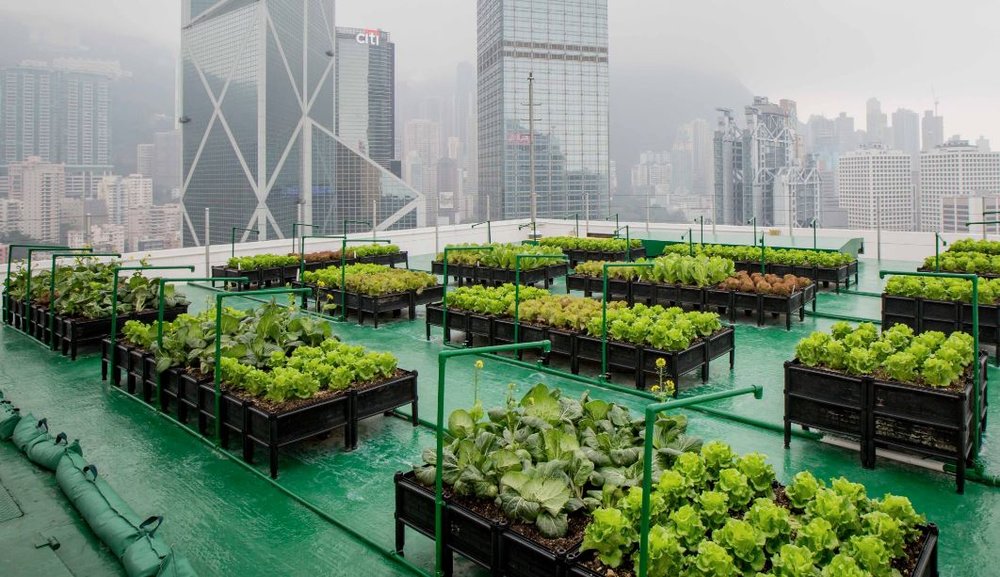The Single Strategy To Use For City Blooming
The Single Strategy To Use For City Blooming
Blog Article
6 Simple Techniques For City Blooming
Table of ContentsGet This Report on City BloomingNot known Factual Statements About City Blooming City Blooming Things To Know Before You BuySome Known Details About City Blooming See This Report on City Blooming
Intrigued in growing food to buy in the City of Chicago? Thinking of beginning an area garden? Changes to the Chicago Zoning Ordinance allow farming uses like area yards and metropolitan farms in many components of the city. Below is a checklist of regularly asked concerns relating to the policies and policies that growers ought to consider when planning a city agriculture task.
The zoning amendment does not customize any other codes handling composting, structure licenses, acquiring or leasing City possessed residential or commercial property, organization licenses or environmental contamination. There are existing codes that manage these problems and they continue to be completely impact and might apply to your project. Neighborhood gardens are usually possessed or taken care of by public entities, public companies or community-based organizations and maintained by volunteers.
Urban ranches expand food that is planned to be sold, either on a not-for-profit or for-profit basis. Due to their industrial objective, metropolitan ranches call for a company permit. Yes. A neighborhood yard is allowed to sell surplus generate that was expanded on website if the sales are accessory or subordinate to the garden's main purpose described above.
The smart Trick of City Blooming That Nobody is Talking About
Composting is enabled but only for plant material that is generated and used on site. The amount of garden compost product can not exceed 25 cubic yards at any offered time according to the criteria in 7-28-715 of the City's Municipal Code. Yes. Due to the fact that the dirt at many new yard websites needs modifying, compost, soil, timber chips, or other materials can be gotten to build or boost the expanding area - sustainability.

If a structure authorization is required then the hoophouse will be taken into consideration an accessory building. You can figure out more concerning the structure authorization demands by speaking to the Division of Structures. The 25,000-square-foot size restriction is planned to stop a single community garden from controling a given block or diminishing the block's existing property or industrial personality.
The limitation does not put on yards situated in Public Open Room (POS) areas. Can there be more than one neighborhood garden that is 25,000 square feet on a single block? Yes. The size limitation puts on private gardens, not to private blocks. No. Fence is not needed, nevertheless, gardens that have big parking lot may be called for to set up fencing or other landscape design functions.
The Definitive Guide to City Blooming
B1 & B2 districts call for that all business usage tasks be performed inside your home. Is secure fencing needed for urban ranches? Fences might be required, along with landscaping and screening, for particular vehicle parking areas and outdoor job or storage locations depending on area and the details task taking area.
Yes. Urban farms call for building authorizations and zoning authorizations before construction. Other kinds of city testimonial might be required relying on specific structures, tasks, size, landscape design, licensing, public health and stormwater management problems. A number of these demands are determined in the job layout or permitting process, however, the candidate may be liable to independently identify specific licenses or allows that might be needed.
Yes. The kind of certificate is determined by what is taking place at the website. The Department of Company Affairs and Customer Security can aid identify the specific type of service license that's required. Yes. Off road parking is required for the majority of business jobs in Chicago. The needed variety of garage is based upon the number of workers functioning on site and not the square footage of the growing space.
What Does City Blooming Do?

An urban farm can market compost material generated on website, nonetheless, the procedure has to comply with the policies in 7-28-715 of the Chicago Municipal Code. Aquaponic systems are allowed inside read this article your home on city ranches in lots of zoning areas.
Approximately 5 hives or swarms of honey bees may be maintained as an accessory usage. However, beekeepers must register with the Illinois Department of Farming. To find out more about the proposed zoning change you may speak to the Division of Housing and Economic Advancement, Bureau of Planning and Zoning at 312.744.8563.
, which takes location in country areas at the side of residential areas.
Examine This Report about City Blooming
, that seek to create social networks established on a shared values of nature and community holism. These networks can develop by way of formal institutional assistance, ending up being incorporated into regional town preparation as a "shift community" movement for lasting metropolitan development.
The more straight accessibility to fresh vegetable, fruit, and meat items that may be know via city farming can enhance food security and food safety and security while lowering food miles, causing reduced greenhouse gas discharges, thereby contributing to climate modification reduction. Some of the initial proof of city farming originates from Mesopotamia.
Report this page